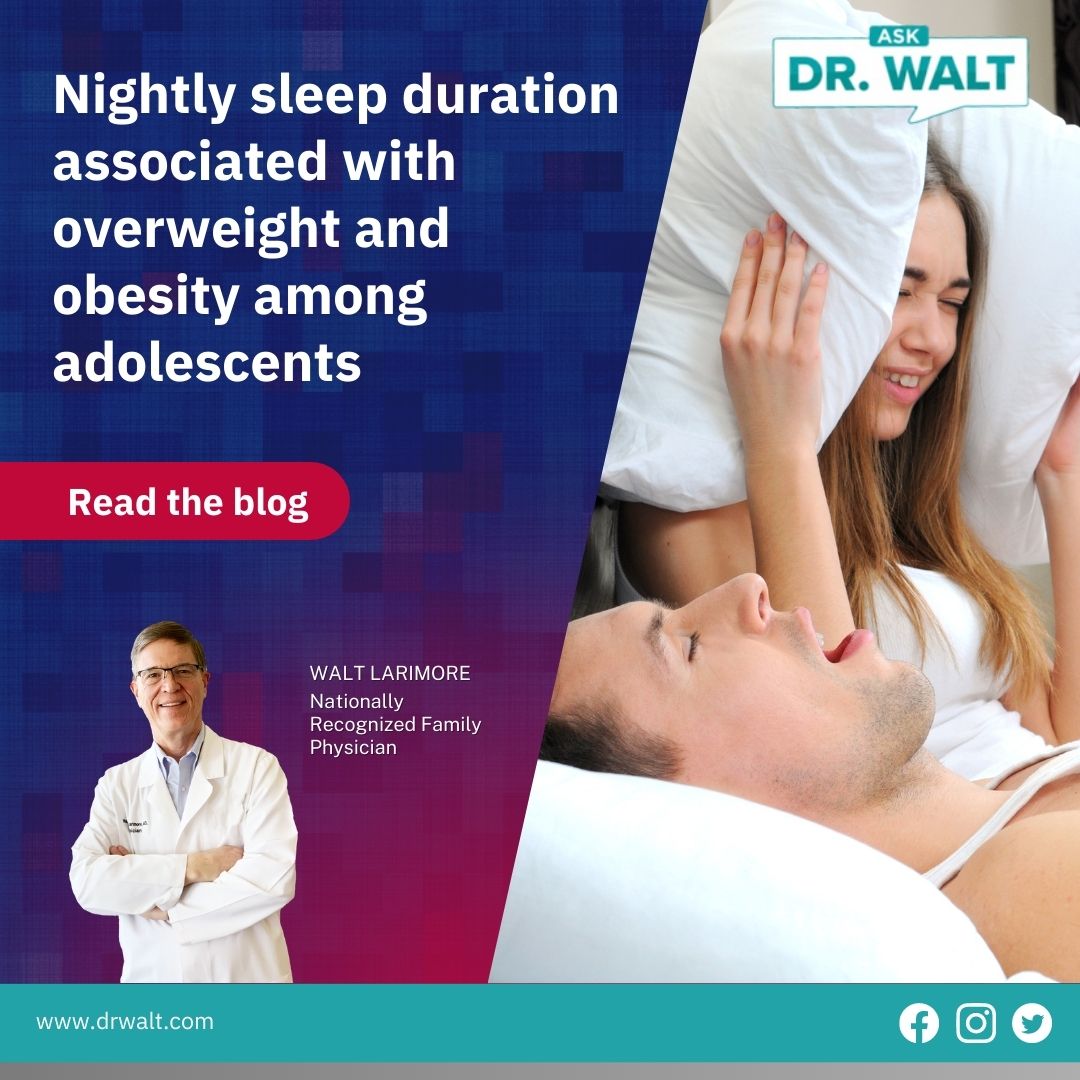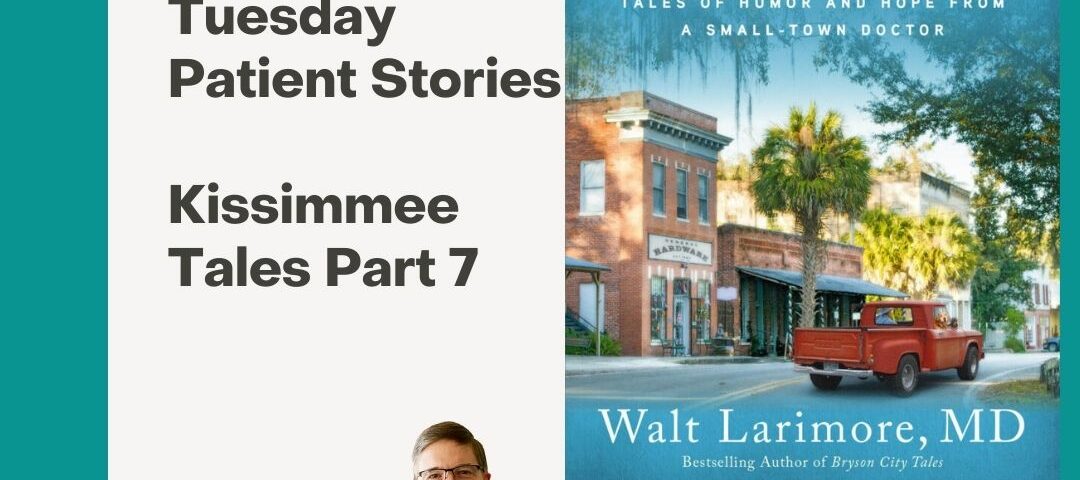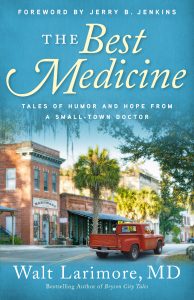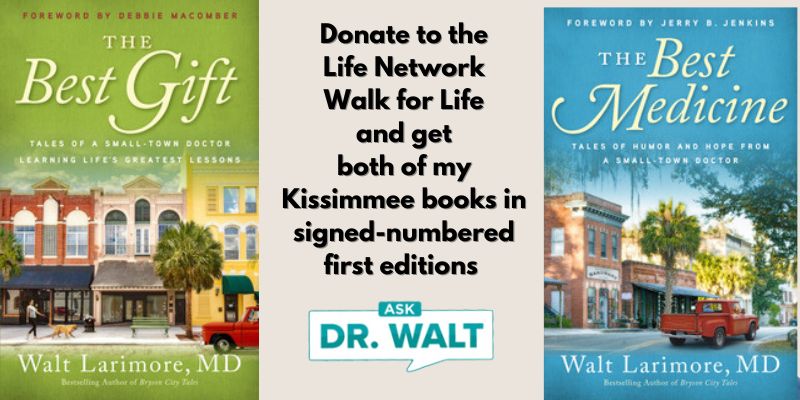
Saturday Book Report – “At First Light” named FINALIST in FIVE Page Turner Book Award Categories
September 17, 2022
Nightly sleep duration associated with overweight and obesity among adolescents
September 21, 2022For the next few months, I’m excerpting chapters from the first of two books about my early years in family medicine in Kissimmee, Florida – The Best Medicine: Tales of Humor and Hope from a Small-Town Doctor. I hope you, your family, and your friends will follow along and enjoy this trip back into the past with me and my family.
CHAPTER 5 – BACK TO NATURE
Although Kissimmee is only about fifteen miles as the crow flies from Disney World, the drive from the world-famous theme park to our new hometown was like traveling into the rural countryside during another time in history. I always felt as if I were passing through an invisible but almost palpable curtain.
On one side were the swank, modern resorts, ubiquitous tourist shops, copious chain restaurants, and endless traffic jams. The other had lonely, two-lane rural asphalt, gravel, and dirt roads cloaked by massive, moss-covered oak trees bordering endless acres of orange groves and pastures. Innumerable snowy and cow egrets surrounded peacefully grazing cattle. Herds of small white-tail deer would step around wild turkeys as they skirted small cypress hollows and marshes.
In many of the idyllic fields, raucous sandhill cranes, standing four to five feet tall, looked regal with their long, thin legs and necks. In most of North America, they are migratory, but in this paradise, the Florida sandhill cranes stay all year.
Their cheeks are white, and their foreheads display a bright red patch, one of their most noticeable features. The males put on comical dancing displays and flap their impressive five- to six-foot wingspans while bowing, running, and jumping several feet into the air. Often, they throw a stick or some grass into the air to impress nearby females and scare away younger males. Once a pair of sandhills mates, they remain together for life.
Soaring bald eagles, ospreys, and turkey vultures, all hunting for their next meal, eyed the amusing dancers from on high. I could roll down my truck windows and enjoy the light scents of hay, grass, and pine trees. The countryside created ever-changing but contenting olfactory sensations.
The population of Kissimmee numbered just over fifteen thousand folks, many of whom, like the Autreys, counted themselves as multigenerational residents. The town sat near one of the largest lakes in Florida, Lake Tohopekaliga, often called Lake Toho. “Some old-timers often say Tohopekaliga means ‘sleeping tiger,’ referring to the lake’s propensity to flood the surrounding land before the installation of flood-control canals in the 1960s,” Dan told me. “Others say it’s a native name meaning ‘we will gather here.’”
“Where does the name Kissimmee come from?” I asked.
“Some say it means ‘a place where mulberries grow.’ Others say it refers to this area as being the headwaters of the Kissimmee River. Most say the name was derived from the ancient Indian term Cacema.”
Dan had to teach me how to pronounce Kissimmee. He said, “It’s ka-SIM-me, with the emphasis on the middle.” Then laughing, he added, “But at night, just after our prayers, Boots and I always pronounce it KISS-a-me, and then we do, with an emphasis on the lips!”
As for the name of the lake, Dan pronounced it Ta-hoe-pa-ka-like-ah. “Most folks just call it Lake Toho, but bass fishermen call it ‘one of the best bass lakes in the world.’ In fact, where Shingle Creek flows into the lake, someone caught a twenty-four-pound, twelve-ounce largemouth bass. They said it measured over thirty-nine inches long and thirty inches around. Can you believe that?”
I wasn’t sure I did, but a local bass fishing guide clarified the monster fish was netted during an electroshock survey in 1974. Another guide told me of local fishers who had caught even bigger bass but who did not take the time or trouble to get them registered for the record books. The lake holds many official records, with the most famous being the heftiest five-bass limit in history—forty-five pounds and two ounces.[i]
Sunrises astounded us as the bright yellow-orange orb slowly rose above the mist-shrouded meadows. But the sunsets repeatedly stunned us—out-of-control, insanely beautiful, and bursting with vivid colors.
One evening we drove from our temporary rental home to a lakeside park. Sitting by Lake Toho, a gentle wind blowing, we watched Kate and Scott play together as the sky exploded into a kaleidoscope of colors. I held Barb close, whispering, “It’s awesome.”
She hugged me. “I’m not sure this is word for word, but ‘The heavens declare the glory of God; the skies proclaim the work of his hands.’[ii] No wonder people whisper, ‘Oh, my God!’ whenever they see some awesome wonder of nature.”
“It’s like God is engraving his autograph into each sunset.”
“What name do you think he uses?” she asked.
“He just writes, ‘I am.’”
We never tired of admiring them—often in astonishment and even reverence—experiencing a joy that radiated from outside ourselves. In moments like this, we forgot both our troubles and ourselves—soaking in the brilliance and splendor.
I realized these special occasions were not ones of self-satisfaction but self-forgetfulness. Times in which I overflowed with admiration for the Creator and his creation—appreciative of a magnificent joy that can only come from outside ourselves. During one of these marvelous sunsets, I realized God created me—and each of us—to both enjoy him and reflect his glory in every sphere of our lives.
Thunderstorms could blow in at only a moment’s notice, with howling winds, driving rain, and fierce lightning. As we watched one approach from the southwest, a wall of monsoon-like rain raced toward us across the lake; we could smell the intensifying sweet ozone.
We sat and waited until the very last moment before gathering our kids and blankets and sprinting to the car, laughing all the way and arriving with seconds to spare.
At night, there were so few city lights that the sky glistened with stars, constellations, and the shimmering of the Milky Way. Frogs, crickets, and katydids provided a symphonic overture to nature’s spectacular planetarium. I would gaze at the spectacle and hum the old hymn:
This is my Father’s world,
And to my listening ears
All nature sings, and round me rings
The music of the spheres.[iii]
That the Creator did this for each of us to see was a delightful thought. That he had moved us here was reassuring and comforting. Our painful past began to melt away.[iv]
[i] “About Lake Tohopekaliga,” Orlando Bass Guide, tinyurl.com/y5okpv35.
[ii] Psalm 19:1.
[iii] Maltbie D. Babcock, “This Is My Father’s World,” 1901, public domain, Wikipedia, tinyurl.com/y5g4wbhg.
[iv] For this chapter, I refreshed my memory with the following: (1) “Lake Tohopekaliga,” Wikipedia, tinyurl.com/y34fgtv3; and (2) Katherine Long, “Historians Try to Trace Origins of Indian-Named Places,” Orlando Sentinel, November 16, 1986, tinyurl.com/yxf4qywn (subscription required).
TO BE CONTINUED
This excerpt of The Best Medicine: Tales of Humor and Hope from a Small-Town Doctor is provided with the permission of the publisher Baker/Revell. You can learn more about the book or purchase a copy here.
© Copyright WLL, INC. 2022.
Read more biblically based advice by Dr Walt Larimore.





